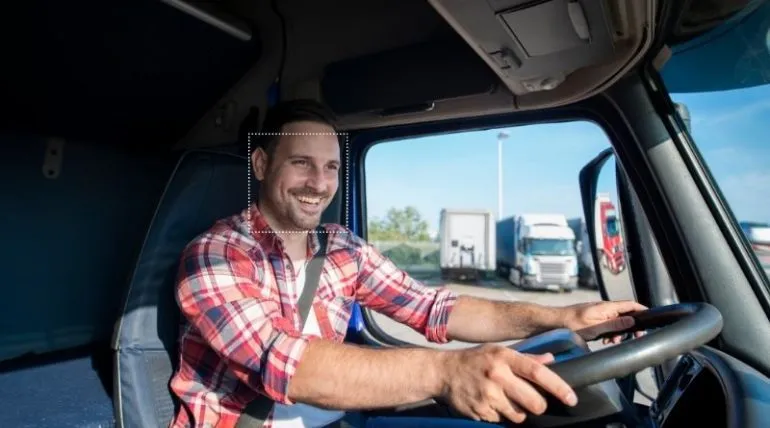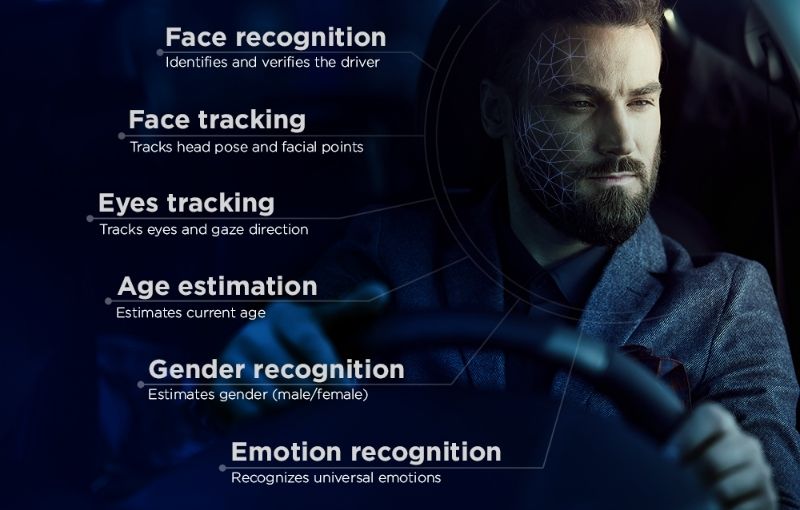What is ADDW – Advanced Driver Distraction Warning – and how to implement it?

Serious accidents involving heavy commercial vehicles are uncomfortably common. Simply glancing away from the road for more than 2 seconds is enough to significantly increase the risk of a crash. ADDW – the latest safety requirements for commercial vehicles, should help make the roads safer for everyone, and the deadline for their implementation is quickly approaching.
What is ADDW (Advanced Driver Distraction Warning)?
Advanced Driver Distraction Warning (ADDW) is a system capable of
- recognizing the driver’s level of visual attention to the traffic situation, and
- warning the driver when distracted.
ADDW falls within the DDR (Driver Distraction and Drowsiness Recognition) safety measure, forming part of the European General Safety Regulation. It aims to drastically reduce the number of road deaths, serious injuries and accidents related to visual distraction.
The manufacturers should implement ADDW in M1, M2, M3, N1, N2, and N3 vehicles from July 2022 (new type approvals) and July 2024 (all new vehicles).
How does ADDW work?
Operating a commercial vehicle demands the driver’s full attention. However, it also often comes with various distractions that can challenge the safety of all traffic participants – from long, demanding shifts to multitasking while driving.
ADDW focuses on detecting visual distractedness in order to provide timely warnings to the driver. It does so by monitoring the driver via a driver-facing camera embedded in the steering wheel or instrument cluster.
Driver eye gaze monitoring
Tracking the driver’s eyes is the most accurate way of monitoring their visual attention. It can, for example, help determine where a driver is looking and for how long.
It’s important to gather as much reliable data as possible in real time – from the driver’s eye movement to gaze direction. For example, our technology provides comprehensive outputs on eye movement, eye closure, gaze direction, 3D and 2D coordinates of the eyes (pupils), and iris radius.
If a driver’s gaze or eye movement indicates distracted behavior, the system should trigger an alert. It can, for example, display a light on the instrument panel or produce a warning sound.
Driver head tracking
In some situations, such as large head rotations, it is not possible to track the driver’s eyes. That is where we rely on the strong correlation between head and eye movement.
One example of such a scenario is the blind spot check. The driver performs a large head rotation, briefly occluding the eyes. In this case, head movements and facial orientation can indicate gaze direction when the eyes are occluded.
By combining eye movement tracking and head tracking, it’s also possible to detect drowsiness. For example, when the driver is tired or intoxicated, their head will often drop down, they will have closed or barely open eyes, and similar.
Other growing automotive AI technologies
Although they may not be mandated by regulatory bodies (yet), other automotive AI technologies are quickly gaining traction. Some of them are helping make driving safer, while some create a personalized, more convenient in-cabin experience.

Driver identification
Driver identification is increasingly used to keep both the driver and the vehicle safe.
For example, it lets only verified persons access and start the vehicle. If an unauthorized person attempts to start the vehicle or switch places with the driver during the ride, the system can notify the owner or stop the vehicle. This helps prevent theft and gives owners better control of the vehicle.
In most cases, multiple drivers have access to the same vehicle. With driver identification, it’s also possible to set up permissions or restrictions. For example, specific drivers can have a driving time or speed limit.
Furthermore, face recognition enables a more personalized in-cabin experience. The system can remember the preferred settings of each driver and restore them automatically. It can also be combined with face tracking and face analysis to provide a complete picture of the driver’s state and moods and create a meaningful driver profile.
Occupancy detection
To improve the safety of all passengers, it’s important for the system to detect vehicle occupancy. With the help of our technology, it’s possible to determine how many passengers are in the vehicle, who they are, what their relative position is, how they are feeling, and more.
This not only helps improve the occupants’ safety but also enables the system to personalize the in-cabin environment to meet their needs in real time. This includes adjusting the temperature, music, lighting, seat adjustments, and other environmental controls according to the number of passengers, their demographics, current emotional states, and more.
Your reliable automotive AI partner
To fulfill the legal requirements and, more importantly, increase the safety of all traffic participants, manufacturers have to implement the new safety requirements as soon as possible.
At Visage Technologies, we’ve created driver monitoring technology that is extremely lightweight, trained for challenging conditions, and fully customizable. As a technology partner with more than two decades of experience in computer vision and machine learning, we can help you develop a custom, comprehensive solution. Get in touch to discuss your project or request a free evaluation license.
Explore proven computer vision technology
Discuss your project with our experts and start your free trial today.
